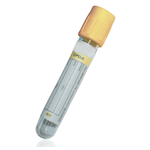Suitable Specimen Types
- Serum
- EDTA Plasma
- Li Hep Plasma
Sample Processing in Laboratory
Usual
Sample Preparation
Centrifuge and separate. All serum and urine samples must be analysed within 24 hours of receipt into the laboratory.
Turnaround Time
1 DaySample Stability
4 ºC
Osmolality
General Information
The osmolality test is a snapshot of the number of solutes present in the blood (serum), urine, or stool. It is ordered to help evaluate the body's water balance, its ability to produce and concentrate urine, to help investigate low sodium levels (hyponatremia), to detect the presence of toxins such as methanol and ethylene glycol, and to monitor osmotically active drug therapies such as mannitol. It is also ordered to help monitor the effectiveness of treatment for any conditions found.
Serum osmolality is primarily used to investigate hyponatremia. Hyponatremia may be due to sodium loss through the urine or due to increased fluid in the bloodstream. Increased fluid may be due to drinking excessive amounts of water, water retention, decreased ability of the kidneys to produce urine, or the presence of osmotically active agents such as glucose, mannitol, and glycine (a chemical used in surgical irrigation fluids).
Mannitol, glycine, and the ingestion of toxins such as methanol and propylene glycol can be detected, evaluated, and monitored by ordering an osmolal gap. This calculation compares measured osmolality with measurements of the major solutes. The osmotic gap is the difference between them and represents the presence of an osmotically active substance in the blood. In order to calculate the osmotic gap, tests for blood sodium, blood urea and glucose must be performed.
Patient Preparation
None
Notes
The osmolar gap can be determined using:
Osmolar gap = Measured osmolality - calculated osmolality
Calculated osmolality is determined using:
Calculated osmolality = (2 x Na) + (2 x K) + Glucose + Urea (all in mmol/L)
Please contact the laboratory if urgent
Reference Range
275-295 mOsmol/kg
(Source : Pathology Harmony Recommendations)
Specifications
- EQA Scheme?: Yes
-
EQA Status:
NEQAS
